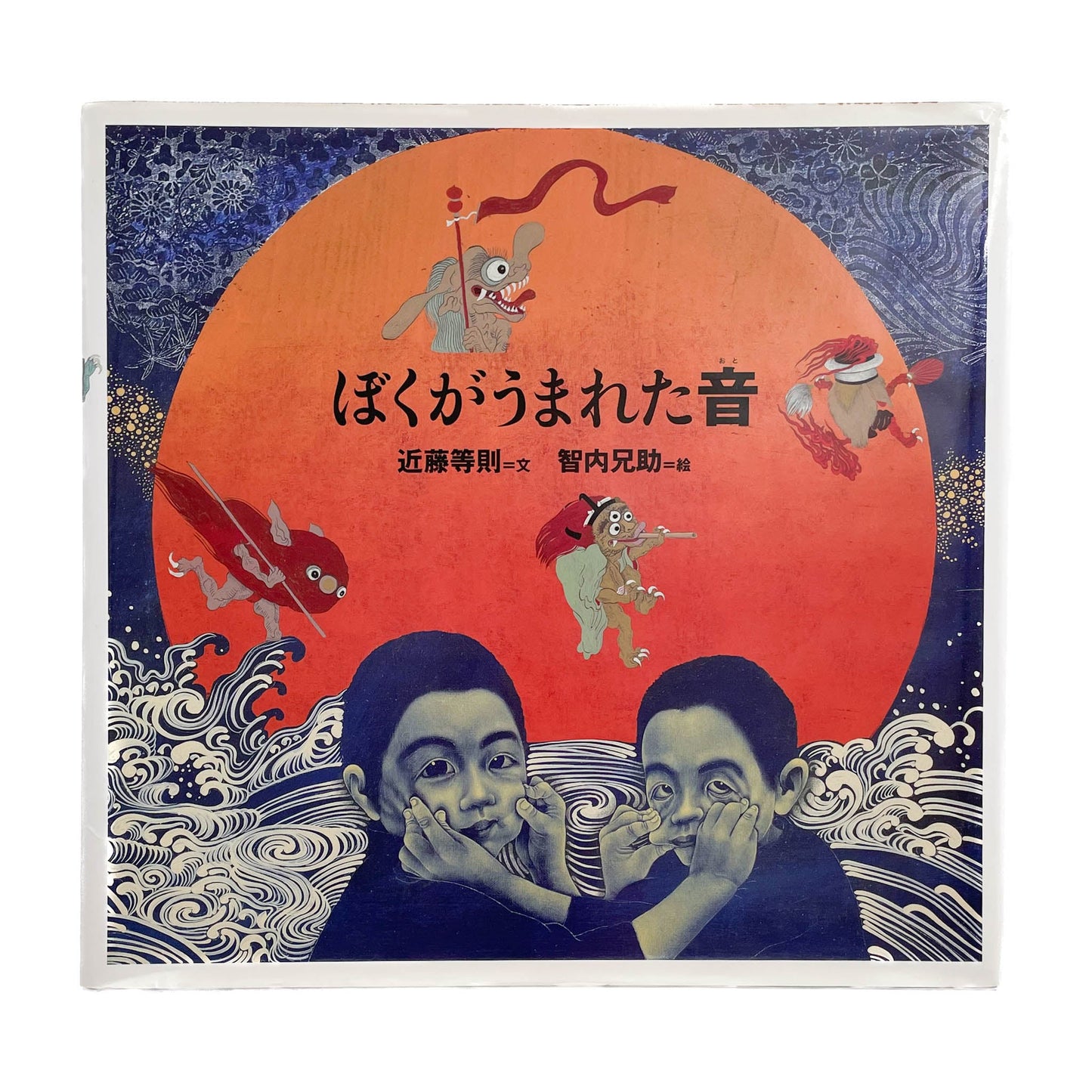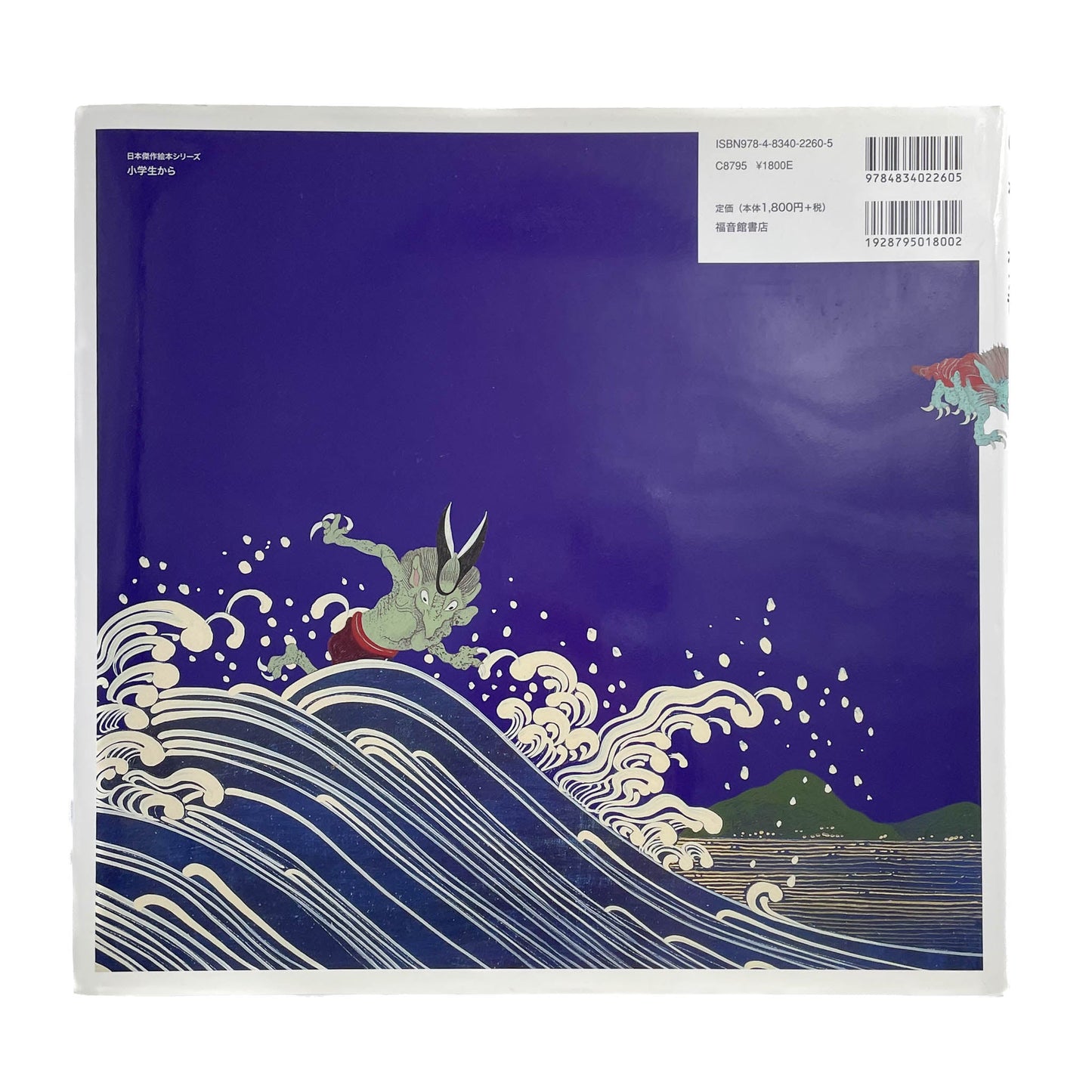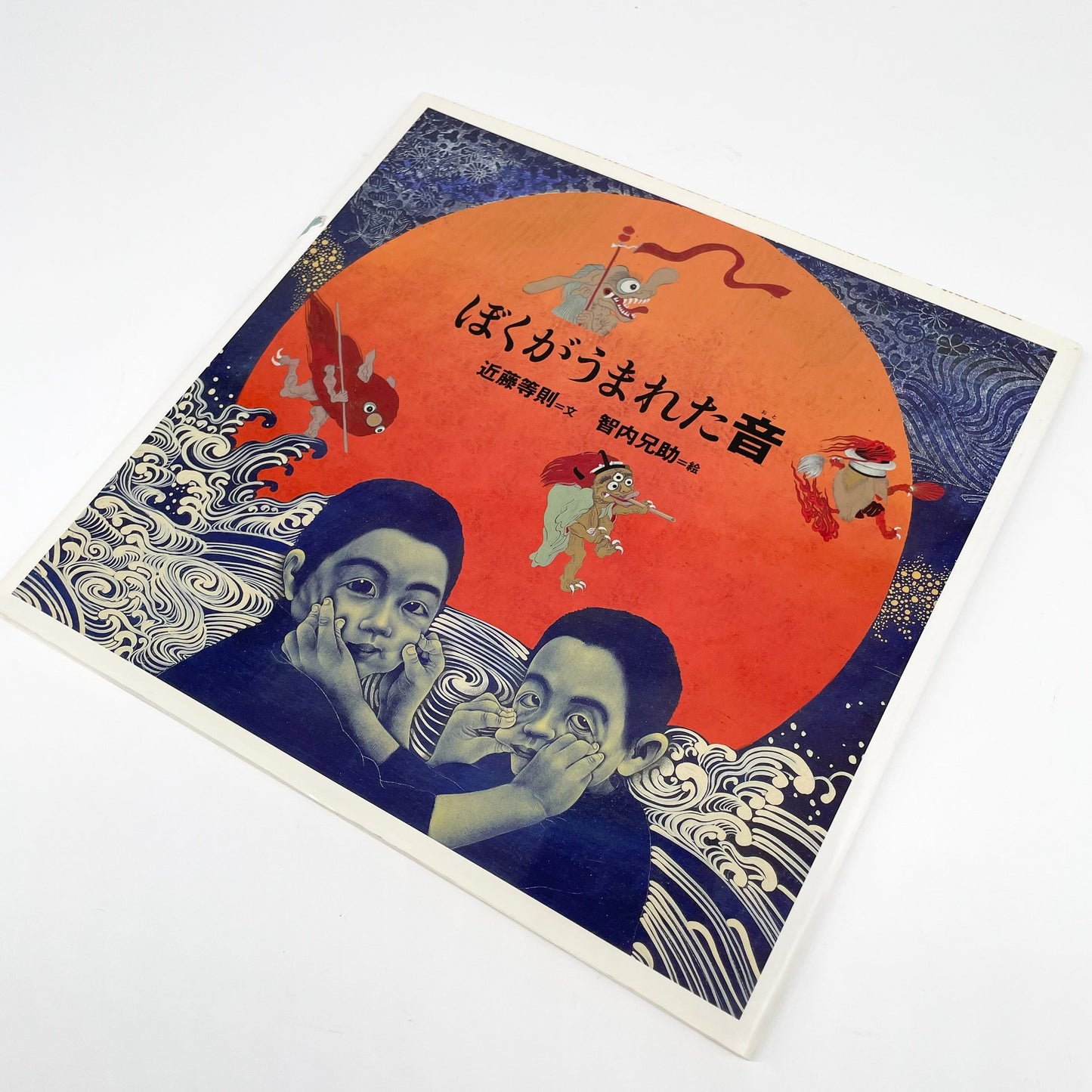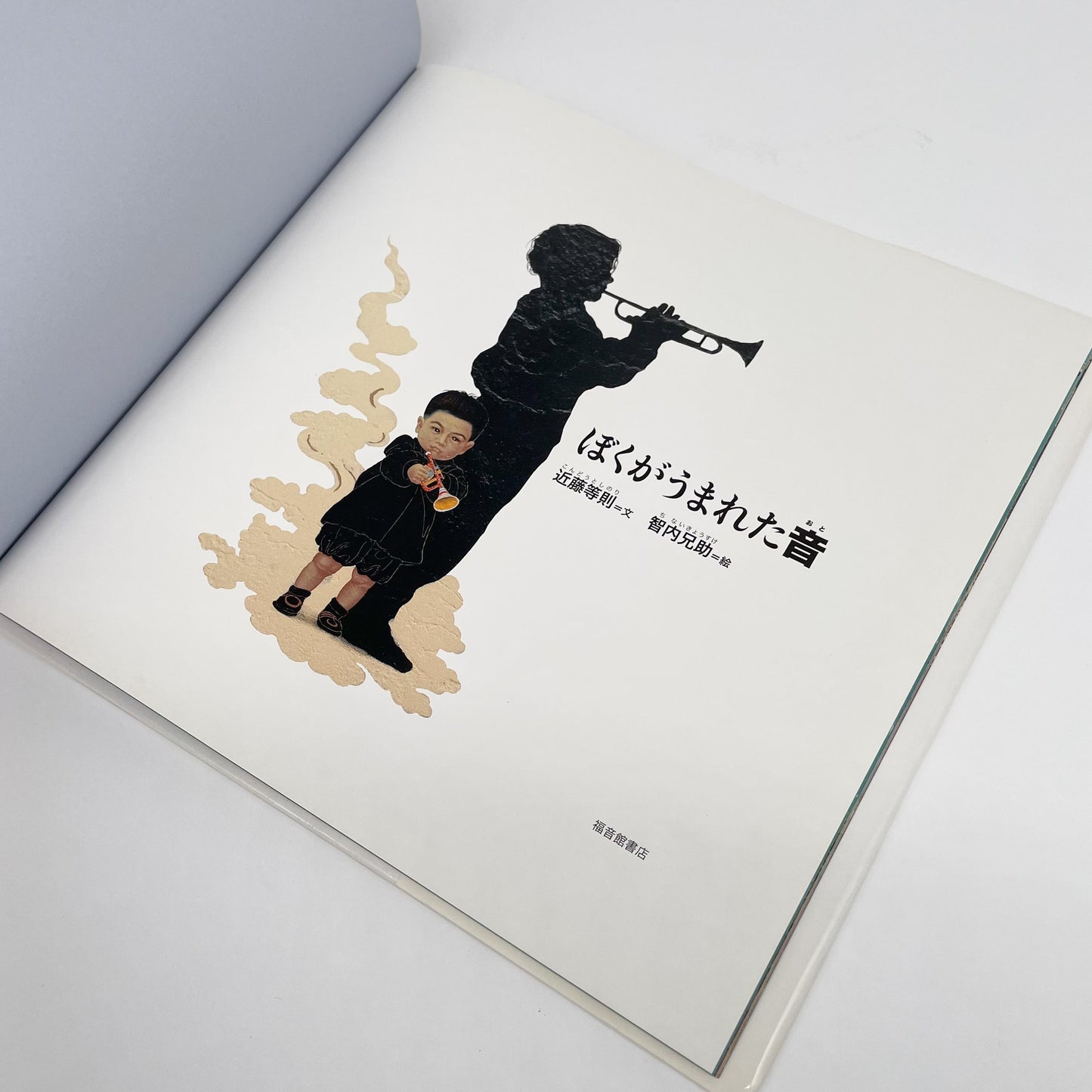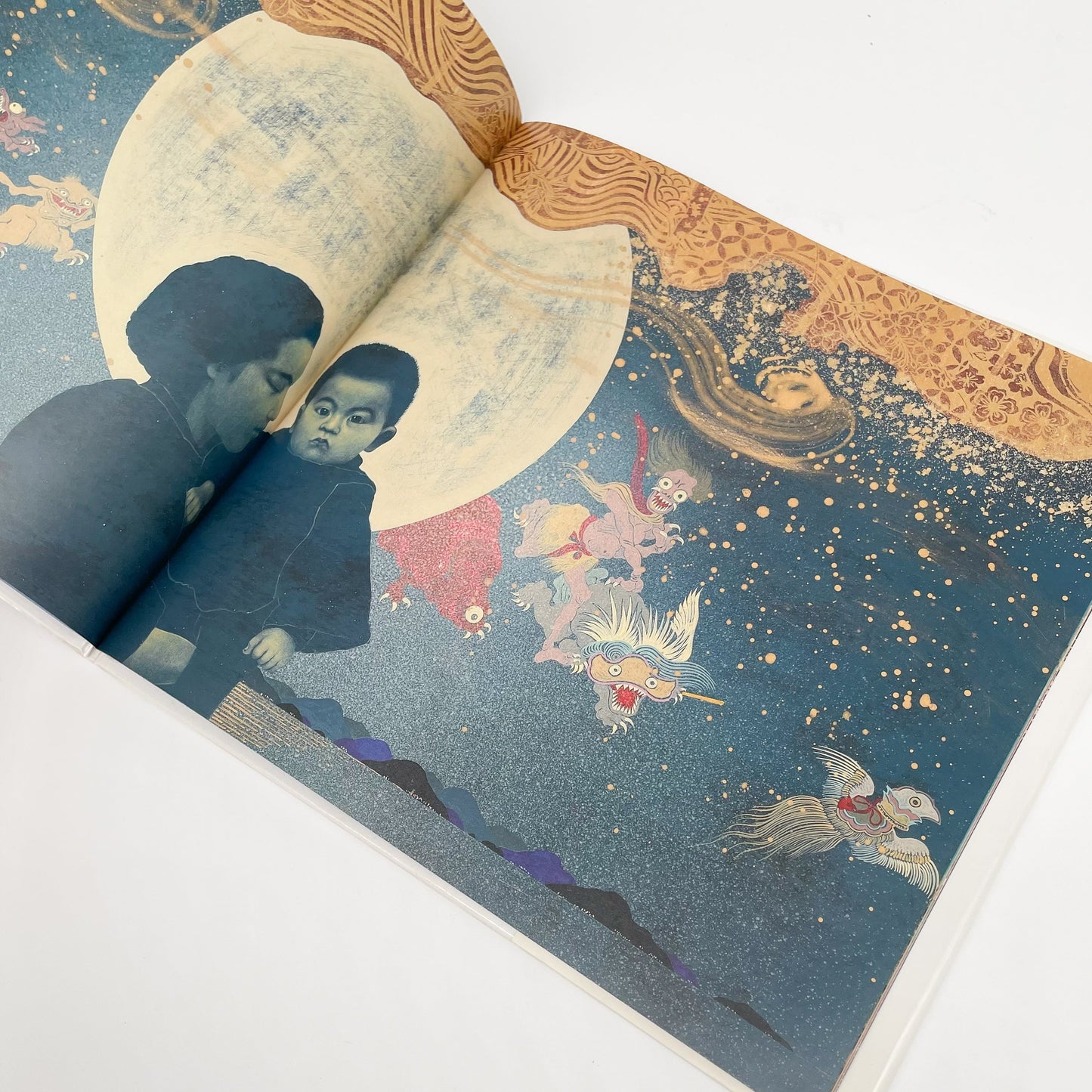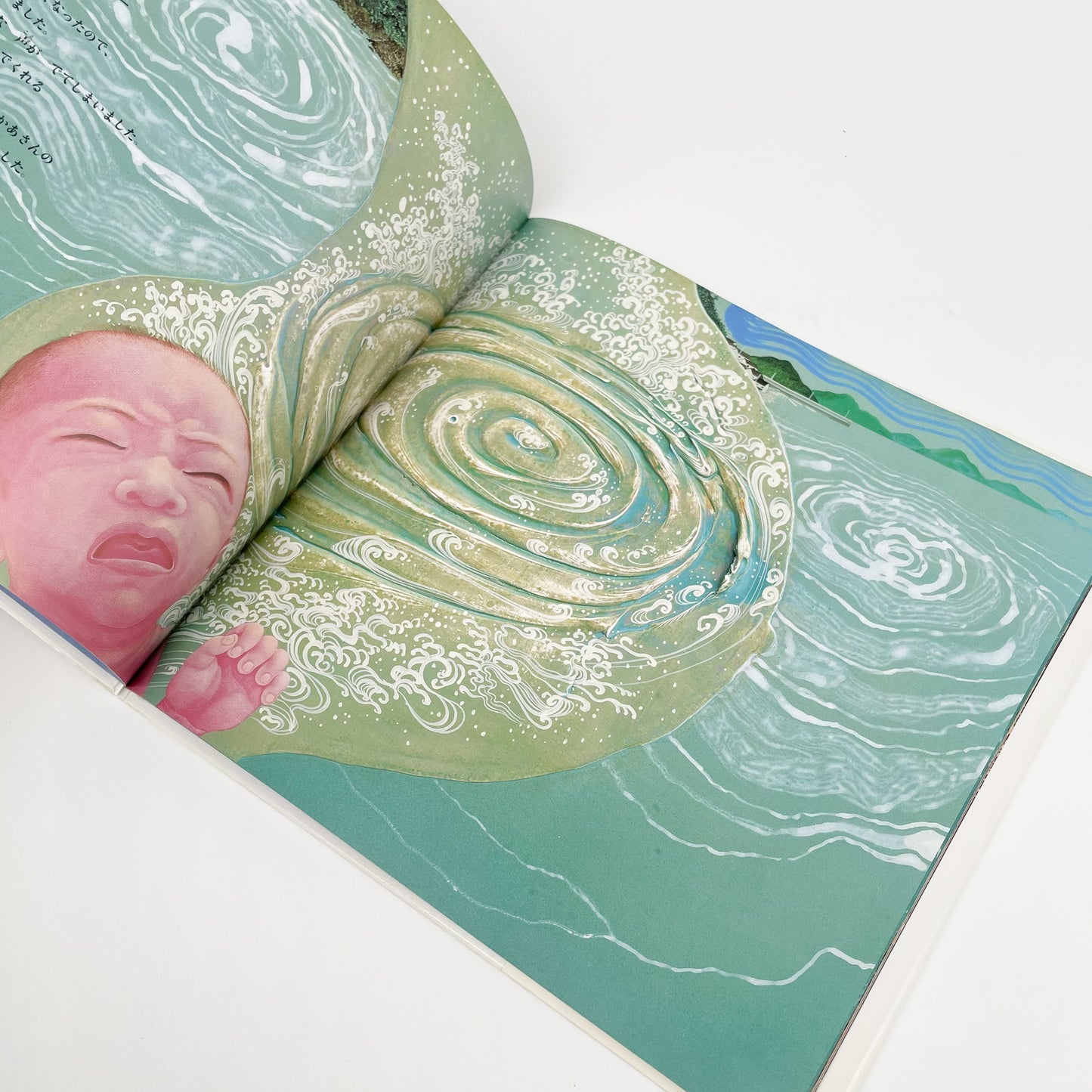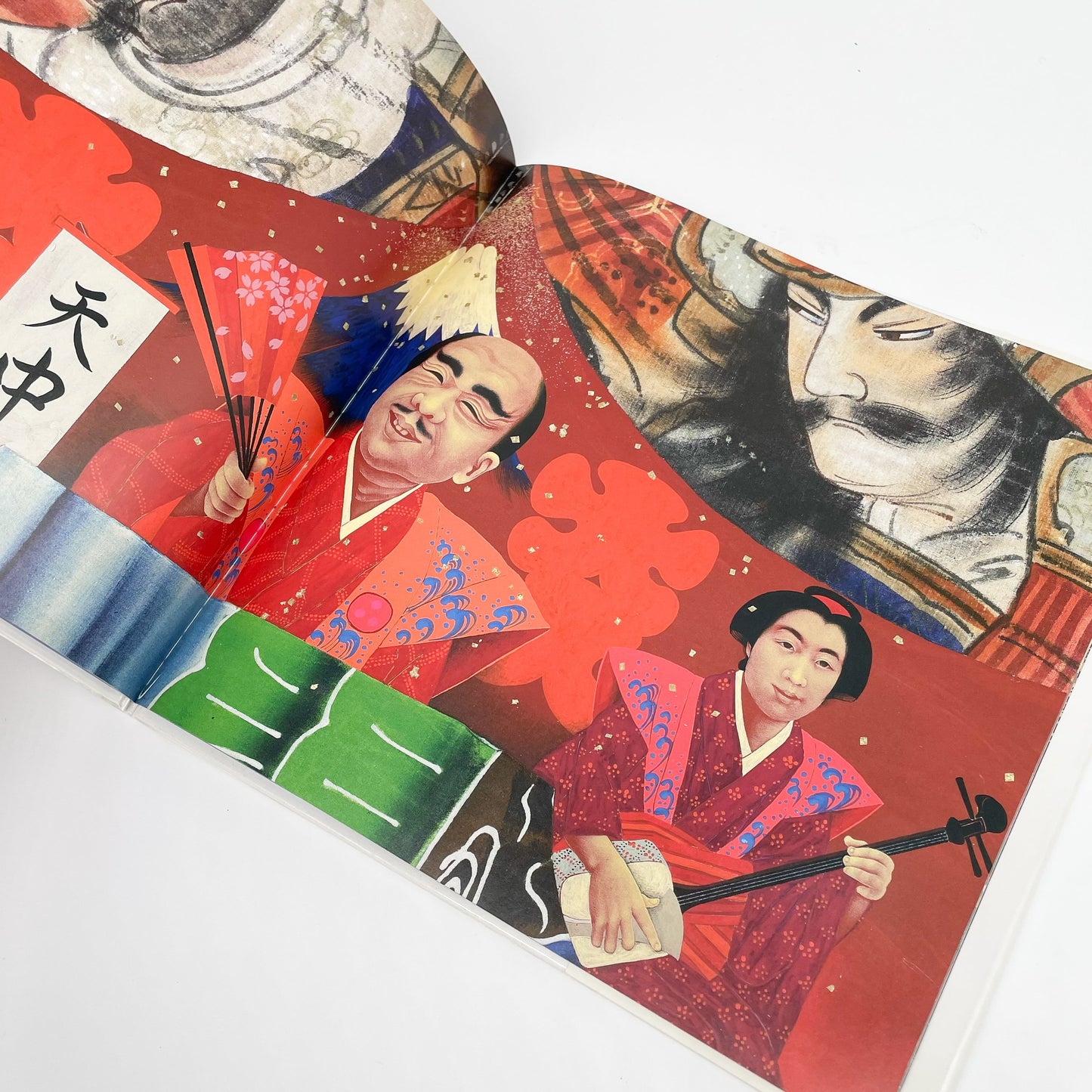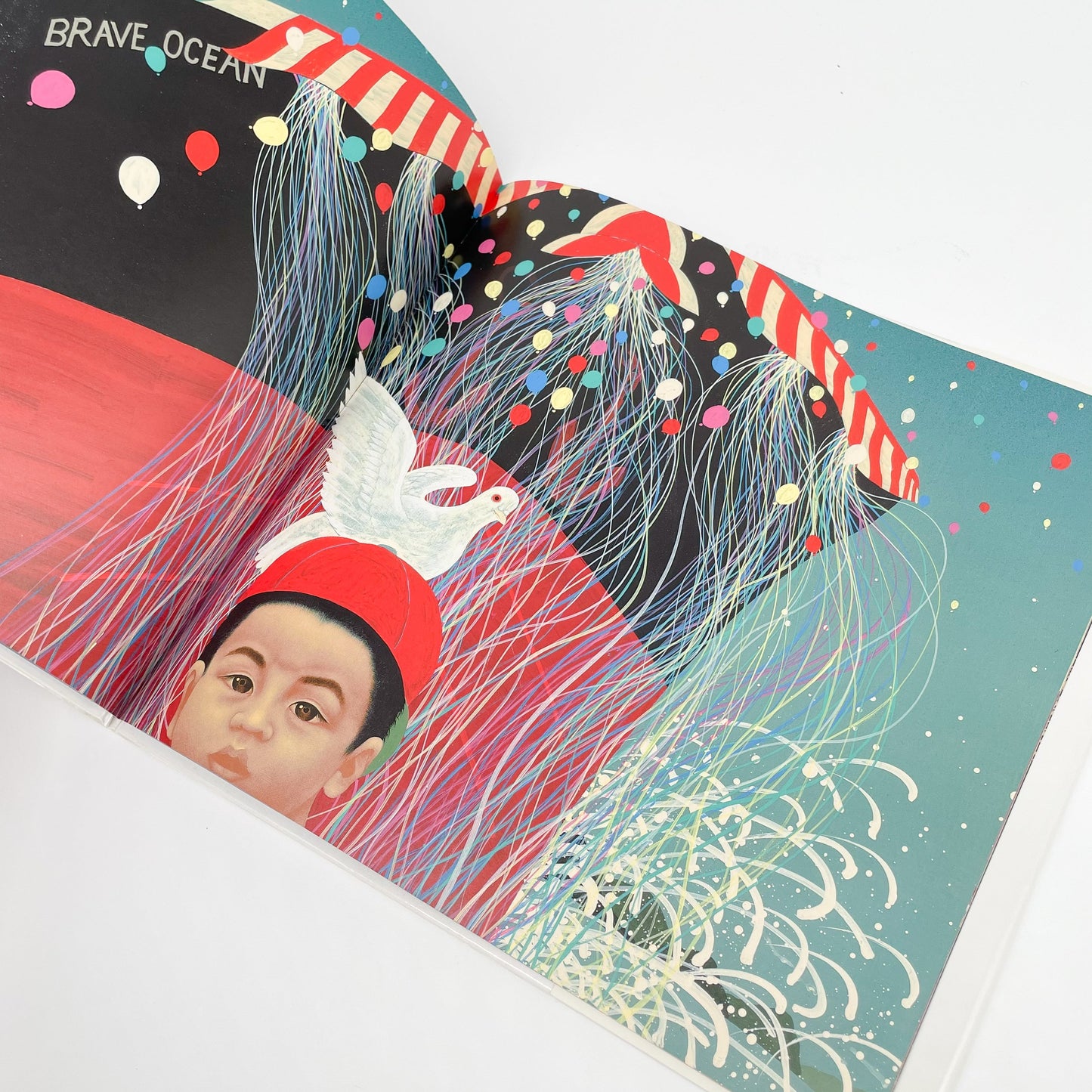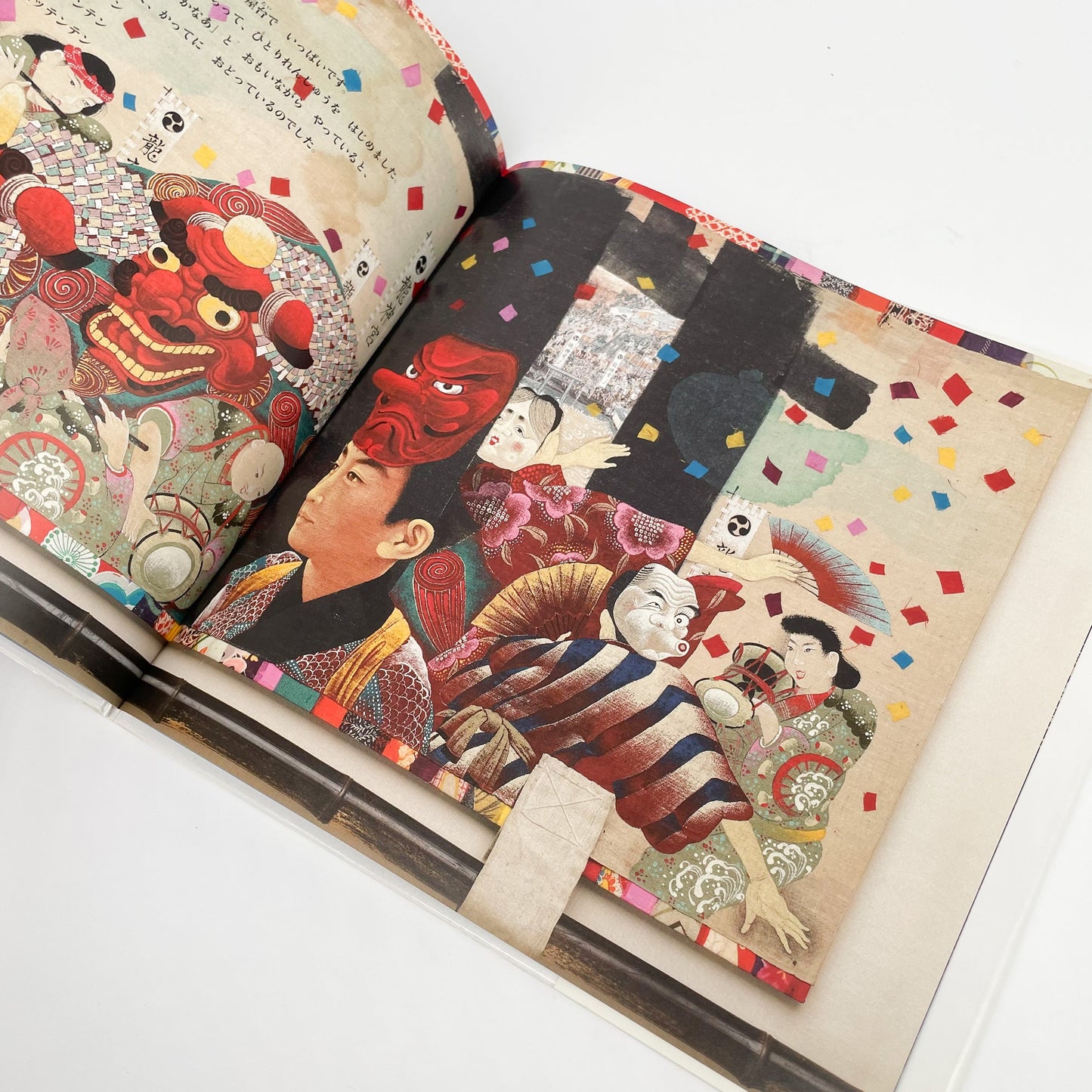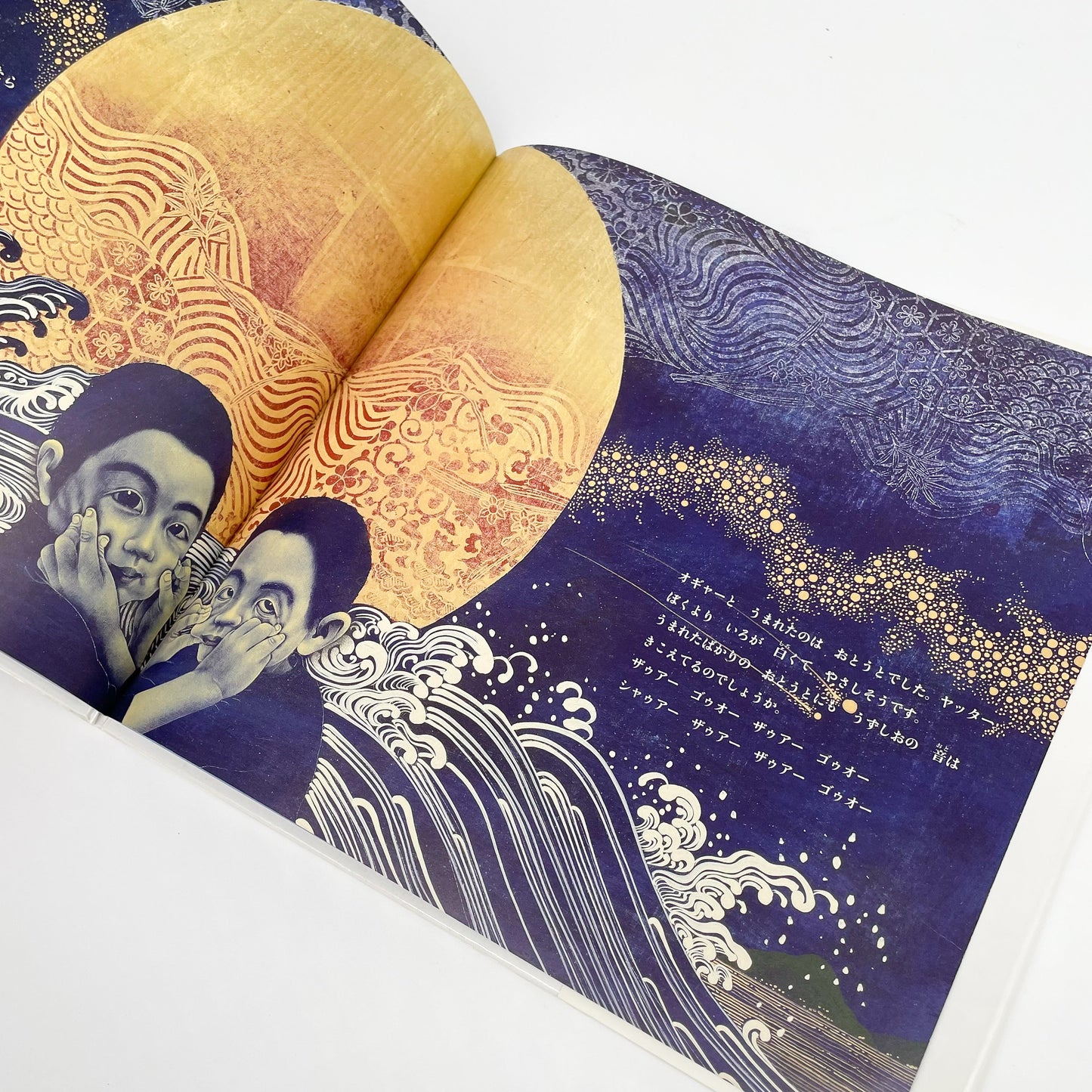The sound I was born with
The sound I was born with
Couldn't load pickup availability
Share
Kondo Toshinori is a world-famous jazz trumpeter. The world of sounds from his hometown that he grew up hearing since childhood is spun out in words. The illustrations are by Western-style painter Chinai Kyosuke. Chinai has established his own unique painting style using acrylic paint on washi paper, and is known for his innovative expressions that transcend the boundaries between Japanese and Western painting. Chinai's dynamic and artistic pictures add color to Kondo's words of sound, creating a magnificent collaboration between sound and pictures that will resonate with children's hearts.
From the sound of a mother's heart beating in her womb, to the everyday sounds of the outside world, to the first cry of a baby, each sound weaves together the miracle of the birth of a life. Through sound, you can experience the warmth of life, the joy of becoming a parent, and the excitement of a new family member being born.
[Title] The sound I was born with
[Publisher] Fukuinkan Shoten
[Publication date] March 2007
[Number of pages] 28 pages
[Size] Approx. 29.3 x 30.7 x 0.8 cm
[Format] Hardcover
[Title reading] I'm a good boy
[Author/Editor] Tonori Kondo/Text, Kyosuke Chinai/Illustration
[ISBN] 978-4-8340-2260-5
[Condition] Used, average condition (minor stains on top): Used Good
[Accessories] Cover
[Books featured]
[Related Exhibitions]
Toshinori Kondo
Born in Hashihama-cho, Imabari City, Ehime Prefecture in 1948. He started playing the trumpet in the brass band club in junior high school, and was a classmate of fellow band member Kyosuke Chinai until he graduated from Imabari Nishi High School. He began performing professionally while attending Kyoto University.
In 1972, after graduating from university, he moved to Tokyo with the aim of becoming a free jazz musician. In 1978, he moved to the United States, lived in the Lower East Side of New York, and began performing and touring with many musicians. In 1983, the year his eldest son was born, he recorded 121 live shows around the world in one year, earning high praise overseas.
In 1984, he returned to Tokyo and formed the band IMA with other Japanese musicians. He began his "International Music Activity" activities, broadcasting his music to the world from Tokyo. While touring the world with the band every year, he also engaged in a wide range of activities, including music for TV and movies, appearing in TV, movies and commercials, and publishing books.
In 1993, he disbanded IMA band and established a new musical base in Amsterdam, Netherlands. In the same year, he started the "Blowing the Earth" series, starting with a performance in the Negev Desert in Israel. He continues his journey of improvising electric trumpet in the great outdoors of the earth, including the Andes in Peru, Ladakh in the Himalayas, McKinley in Alaska, Kudaka Island in Okinawa, and Uno in Mie Prefecture. In 2001, he was invited by the 14th Dalai Lama to produce the "International Peace Music Festival Hiroshima 2001" with the theme of peace and the environment at Itsukushima Shrine in Miyajima. In 2005, marking the 60th anniversary of the Hiroshima and Nagasaki atomic bombings, he started the "PIKADON project" with Seitaro Kuroda, Nobuyoshi Araki, Tadao Ando, and others.
Kyosuke Chinai
He was born in 1948 in Namikata, Namikata-cho, Ochi-gun, Ehime Prefecture (now Imabari City) as the youngest of six siblings.
Even before he started school, he loved to read and look at picture books and draw. He wanted to join the art club at Kitago Junior High School to paint oil paintings, but gave up because all the members were female students. At the time, he was dazzled by the fact that Tono Kondo was elected student council president and gave orders at morning assemblies, and when he saw Kondo practicing the trumpet alone on the beach, he envied his "youth being fully engaged." He joined the art club at Imabari Nishi High School and aimed to become a painter.
While studying at Tokyo University of the Arts, he won the Honorable Mention Award at the Shell Art Award Exhibition (1971), and the theme of the competition, "Contemporary Expression of Japanese Beauty in the Modern Age," became a major theme in his own paintings. For several years before and after graduating from graduate school, he hit a "wall in painting" and stopped creating. He went on a study tour of ancient art in Europe and traveled to Tibet several times for research. During these trips, he reaffirmed the high standard of "Japanese beauty" and resumed his paintings, taking the dignity of "Buddhist paintings" as his model. He also went to the Kingdom of Bhutan in search of the origins of Buddhism.
He has received many awards for painting, including 1st, 2nd and special prizes at the Figaro Exhibition of Contemporary Art in Japan and France, 2nd place at the Bibliothèque des Arts (1978-1981), Honorable Mention at the Tokyo Central Museum Oil Painting Grand Prize Exhibition (1987), Grand Prize at the Drawing Grand Prize Exhibition (1985), Liquitex Prize at the 1st Liquitex Biennale (1986), Special Prize at the Yasui Prize Exhibition (1987), Excellence Award at the Young Japanese Artists Exhibition (1988), and Honorable Mention at the Yasui Prize Exhibition (1990). He has also held numerous solo exhibitions in Japan and abroad, including in Tokyo and New York, and has been highly praised. From March 1992 to April 1993, he illustrated the serial "Kura" by Tomiko Miyao (Mainichi Shimbun).
